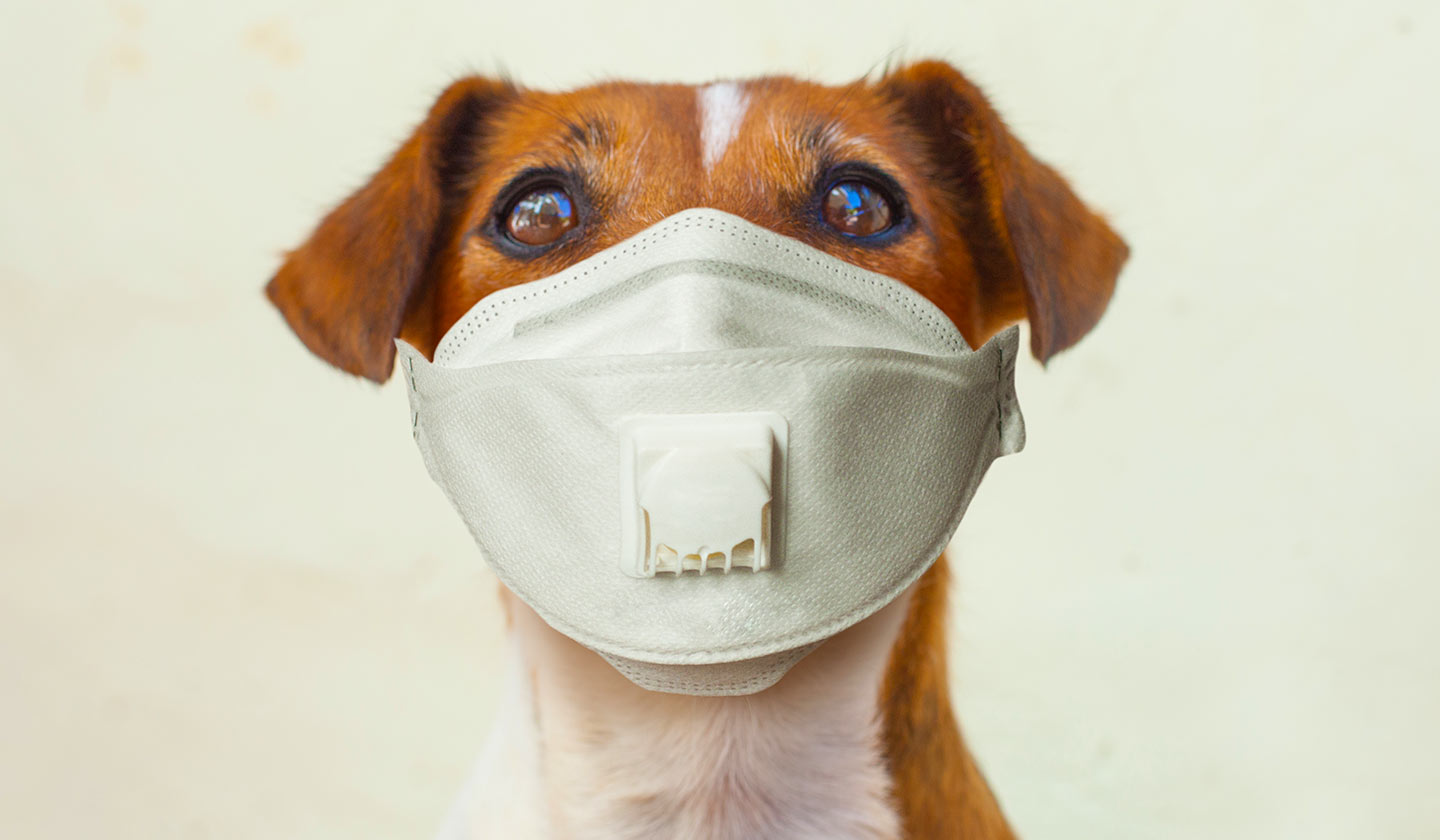Veterinary
Springtime Animal Care

Animals, as well as humans, can easily become ill in spring, due to changes in temperature and environment, so you should be alert for different types of problems more common at this time of year.
It's a time for more outdoor walks, more exposure to sunlight and higher temperatures, making it easier to come into contact with insects and parasites, which can cause allergies.
Allergies are a common condition in dogs and cats, and can be triggered by a variety of factors. The most common allergies in dogs and cats include flea allergies, food allergies and environmental allergies.

Flea allergies
Very common, allergy to flea bites is caused by flea saliva, which can cause intense itching and inflammation of the animals' skin, leading to hair loss and sometimes extensive lesions. Treatment involves eliminating the fleas and using medication and other products to control itching and inflammation.

Food allergies
Food allergies are caused by a reaction to a specific ingredient in the animal's diet.

Environmental allergies
Like seasonal allergies, they are caused by allergens found in the environment, such as pollen, dust mites, fungi and chemicals.

Adverse reactions to food in animals
Food intolerance reactions comprise any abnormal non-immunological response to a food and include toxicity, idiosyncratic, pharmacological and metabolic reactions. Food-induced allergic dermatitis (DAIA) is defined as an exaggerated and abnormal immunological reaction to a food, unrelated to the physiological effect of any component of the food.
The difficulty in differentiating purely allergic reactions from food intolerance reactions means that all reactions are included under the common name of adverse reactions to food.
Adverse reactions to foods of non-immunological origin. Most dogs and cats with DAIA present cutaneous pictures accompanied or not by digestive signs, although the route of entry of the allergenic agent is intestinal. It is not very clear why some dogs and cats show cutaneous signs, others show gastrointestinal signs and others show a combination of both, and there are several hypotheses.
Clinical signs
Food-induced allergic dermatitis (FADI) is the earliest presenting allergy, with 48% of animals in which clinical signs begin before they are one year old. The clinical signs of DAIA are the presence of non-seasonal pruritus and associated lesions with its severity or the development of frequent secondary infections. The presence of itching in the ears and perianal areas is very characteristic of EAD, and a strong relationship between EAD and the concurrent presence of otitis and perianal fistulas has been observed in German shepherds. The prevalence of otitis during AIDAD is very high, appearing in up to about 80% of cases, and in 24% otitis may be the only clinical manifestation. The clinical picture of a food allergy can be very similar to that of an atopic dermatitis, since it is characterised by the same clinical signs and affections of the same areas: muzzle, ear pinnae, axillae, inguinal area and abdomen, so it is impossible to distinguish both entities based on the clinical signs that the animal presents. On the other hand, it has been proved that there is a great relation between both, and there may be animals that suffer from both allergies in percentages that vary from 3% to 30% according to several studies.
In cats, the clinical presentation can appear as generalized non-seasonal pruritus, eosinophilic granuloma complex lesions, head and neck pruritus, miliary dermatitis, self-induced alopecia, exfoliative dermatitis and in some cases angioedema and urticaria.

Diagnosis
The only effective and valid test for the diagnosis of the adverse reactions to food consists in doing an elimination diet for 8 weeks and to verify the disappearance of the clinical signs in this period. The diagnosis will be made after the recurrence of the clinical signs when exposing the animal to the food that it previously ate and its disappearance after the return to the hypoallergenic diet.
In terms of laboratory tests, from a blood sample it is possible to know if our animal presents antibodies against allergenic agents of animal or vegetable origin. It should be noted that in terms of test interpretation, a negative value has a higher predictive value, namely 80%.
Sources
1. Bethlehem S, Bexley J, Mueller RS: Patch testing and allergen-specific serum IgE and IgG antibodies in the diagnosis of canine adverse food reactions. Vet Immunol Immunopathol 2012; 145(3-4):582-9.
2. Veenhof EZ, Knol EF, Willemse T, Rutten VP: Immune responses in dogs with cutaneous adverse food reactions. Vet Q 2012; 32(2):87-98
3. Olivry T, Bizikova P: A systematic review of the evidence of reduced allergenicity and clinical benefit of food hydrolysates in dogs with cutaneous adverse food reactions. Vet Dermatol 2010; 21(1):32-41.
4. Mowat AM: Anatomical basis of tolerance and immunity to intestinal antigens. Nat Rev Immunol 2003;3(4):331–41.
Também lhe poderá interessar
Veterinary
Companion Animals - Nutrition and Health - Part I
Veterinary






